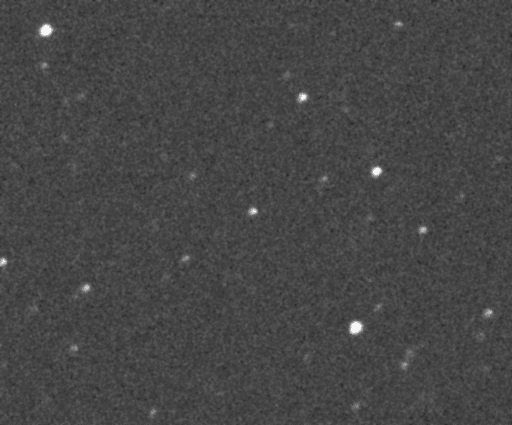In total eclipse of a star, New Horizons' future flyby target makes its presence known

Written by
Emily Lakdawalla
July 19, 2017
After a world-spanning effort, the New Horizons team has successfully observed the tiny target of its future exploration dimming a distant star. Alejandro Soto blogged last month about the challenges of observing a stellar occultation of a very small, incredibly distant object on a (relatively speaking) uncertain orbit. The team reported two weeks ago that the first attempts at observing 2014 MU69 were unsuccessful. But in the third try, on July 17, astronomers in Argentina saw the telltale sign of MU69's presence: a stellar wink.

The animation above has 24 frames, and the star is only blocked by one of them. Amanda Zangari, who participated in the observations, told me that this is not the only successful observation, and that it's the shortest chord. In other words, the team got multiple tracks of the star behind MU69, some of which blotted out the star for longer than this observation did. The resulting data that will be superior for constraining the size and shape of MU69 than a single observation would have been.
The observations would not have been possible without the support and assistance of Argentinians. From the team's press release:
The New Horizons team enjoyed strong support from Argentinian scientists, government officials, and locals, who went above and beyond to ensure mission success. “I’ve been calling the people who helped us, our ‘twelfth player,’” [team member Mark] Buie said. “The Comodoro Rivadavia community came together and did some amazing things for us.” A major national highway was closed for two hours to keep car headlights away. Street lights were turned off to ensure absolute darkness. People like the Intendente or Mayor of the Comodoro parked trucks as wind breaks. Said Buie, “The local people were a major team player.”
“Planning for this complex astronomical deployment started just a few months ago and although the odds seem daunting -- like finding a needle in a haystack -- the team succeeded, thanks to the help of institutions like CONAE (Argentina's National Commission on Space Activities), and all the goodwill of the Argentinian people. This is another example of how space exploration brings out the best in us,” said New Horizons Program Executive Adriana Ocampo.
This video by the New Horizons team gives a little taste of what was involved in deploying an array of 16-inch telescopes across the occultation's probable path in order to catch this brief but important event.
Support our core enterprises
Your gift today will go far to help us close out the year strong and keep up our momentum in 2026.
Donate

 Explore Worlds
Explore Worlds Find Life
Find Life Defend Earth
Defend Earth

